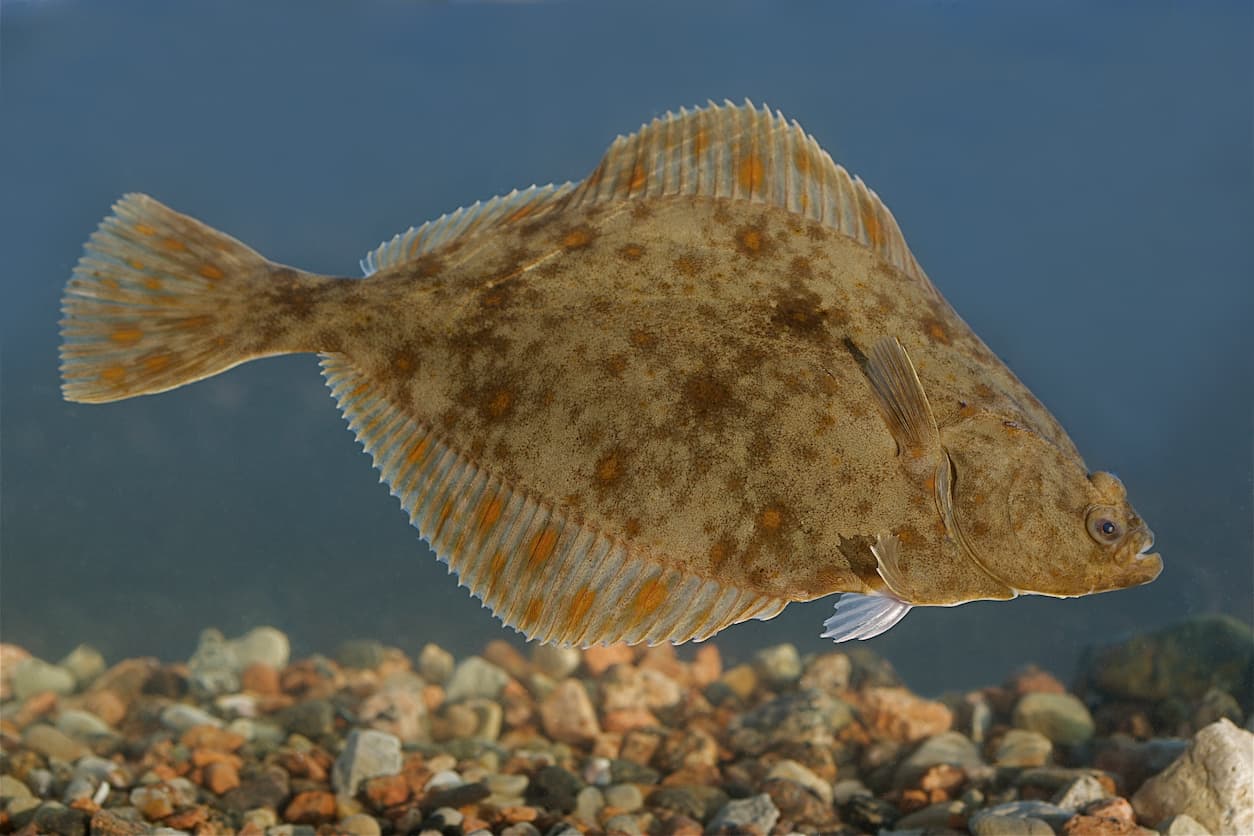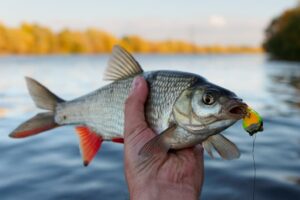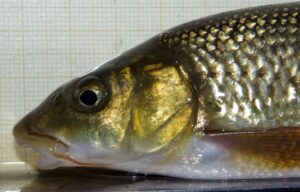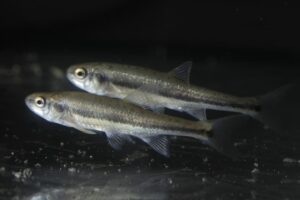Bottom Feeder: European Flounder (Platichthys Flesus) – Habitat, Behavior, And Characteristics

Anglers and fishers across Europe often seek the thrill of landing a versatile and challenging catch. Identifying which species to target for both sport and culinary rewards can sometimes be daunting, particularly when looking at flatfish options.
Among these, the European flounder stands out not only as a popular choice but also for its unique characteristics that intrigue enthusiasts in fishing communities.
Did you know? The European flounder has an uncanny talent – it can change its body colour to match the sea floor! This adaptation helps it stay hidden from predators as well as sneak up on prey.
Our article dives into the world of Platichthys flesus, offering keen insights into their habitat, behaviours, and why they’re so vital to both ecosystems and anglers’ nets. It’s packed with knowledgeable tidbits perfect for your next fishing adventure or if you’re simply fascinated by marine life.

Key Takeaways
- The European flounder, Platichthys flesus, is a flatfish found in the coastal waters of the North Atlantic, from Norway to the Mediterranean Sea. It demonstrates remarkable adaptability to different salinity levels and thrives in estuaries, bays, lagoons, and even freshwater environments.
- This species plays a significant role in both commercial and sport fishing due to its challenging catch and prized flesh. Anglers use natural baits that mimic the flounder’s favoured prey for successful fishing trips while commercial fishers harvest them for supply to markets and restaurants.
- Conservation efforts are vital despite its “Least Concern” status on the IUCN Red List. Monitoring breeding habits and habitat preferences remains crucial for ensuring long-term sustainability while protecting marine biodiversity.
Description of the European Flounder
The European flounder, also known as Platichthys flesus, is a flatfish belonging to the family Pleuronectidae. It has a diamond-shaped body with both eyes located on the right side, and its coloration varies from brownish-green to olive with irregular dark spots and blotches for camouflage in its habitat.
The species can be found in brackish waters, estuaries, and coastal areas of the eastern Atlantic Ocean from Norway to the Mediterranean Sea.
Physical Characteristics
European flounders possess a distinct physical appearance, setting them apart from other flatfish. Their bodies can grow to a maximum length of about 50 cm, with weight ranging from a modest 200 grams to hefty specimens that tip the scales at up to 2 kg.
These fish showcase a color palette on their upper sides varying from brown to an olive-green hue, camouflaging effectively with sandy or muddy bottoms.
| Class |
| Actinopterygii |
| Order |
| Pleuronectiformes |
| Family |
| Pleuronectidae |
| Genus |
| Platichthys |
| Species |
| P. flesus |
| Binomial Name |
| Platichthys flesus (Linnaeus, 1758) |
Characteristic black and white spots dapple across their backs, adding not only to their unique look but also helping in predator evasion. Unlike some freshwater fish within the Pleuronectidae family, these panfish have evolved flattened bodies ideal for life along the benthic layers of oceanic and brackish environments.
Anglers often seek out this species for its challenging catch and culinary potential when fried.
Habitat and Distribution
The coastal waters of the North Atlantic, including the chilly Arctic and brackish Baltic Sea, serve as prime real estate for the European flounder. These flatfish favour shallow environments where they can thrive unseen; think estuaries teeming with life, serene bays and lagoons, or even stretches of river meandering towards saltwater lakes.
Anglers might be surprised to hook one in these varied watery neighbourhoods that offer a rich buffet of benthic fauna.
European flounders have a knack for adapting to different salinity levels in their quest for comfort and food. They inhabit freshwaters with ease, rivaling freshwater clam populations for space.
Their presence indicates healthy ecosystems across their native habitats—a fact not lost on those invested in marine conservation. As migratory fish, they follow seasonal cues to seek out optimal conditions for feeding and spawning—a dance guided by nature’s rhythms rather than human borders or expectations.
Behavior and Reproduction of the European Flounder
The European Flounder is a bottom-dwelling species that feeds on small crustaceans, worms, and fish larvae. They are known for their ability to change color to match their surroundings, providing effective camouflage from predators.
Reproduction occurs in the winter months, with females releasing thousands of eggs that are fertilized externally by the male. The larvae drift in open water before settling into their benthic habitat as they grow.
Feeding Habits
European flounders scour the ocean floor for their next meal, with a preference for invertebrates such as crustaceans, mollusks, and worms. They employ a stealth approach in nutrient-dense habitats like seagrass beds or sedimentation zones to ambush shrimps, crabs, and smaller fish.
Anglers aiming to snag these clever predators often find success using natural baits that match the flounder’s favoured prey.
Their hunt is most fruitful in specific environments where food sources flourish. Mudflats and epibenthic zones act as thriving dining rooms for these flatfish. For those casting lines at sea, mimicking this diet through lures can entice an eager bite from the hidden hunters below.
Mastery of imitating natural feeding scenarios plays a crucial role in outsmarting this species on your next fishing trip.
Reproductive Patterns
European flounders embark on their reproductive journey as the chill of winter fades and spring heralds a time for renewal. Spawning occurs during this season, taking advantage of the rising water temperatures and longer daylight hours.
Females demonstrate remarkable fecundity, each releasing up to 150,000 eggs into the welcoming embrace of nutrient-rich shallow waters such as estuaries and bays where conditions are ideal for growth.
The survival race begins from the moment these eggs are deposited; plankton serves as nourishment for developing larvae who must evade predators while growing. Juveniles mature quickly, reaching sexual maturity by 2-3 years old—a swift progression ensuring their numbers can replenish annually to maintain population stability in their natural habitats.
This cycle is fundamental not only for sustaining flounder populations but also supports commercial fishing interests that rely on consistent availability of these flatfish.
Importance of the European Flounder
The European Flounder plays a significant role in commercial and sport fishing, being a sought-after catch for many anglers. Additionally, its conservation status is of concern due to various threats, making it an important species to monitor and protect.
Commercial and Sport Fishing
Anglers prize the European flounder for its challenging fight and excellent taste, making it a target in sport fishing excursions. To get the best catch, fishermen opt for strong rods and reels equipped with either braided or monofilament lines.
Successful bait includes natural choices such as shrimps, crabs, and worms that closely mimic what European flounders eat in their natural habitat.
On a commercial level, fleets harvest these fish to supply markets and restaurants owing to their valued flesh. With precise techniques honed over time, commercial fishers track down schools of European flounder using knowledge of their spawning habits gleaned from resources like OBIS or U.S. Geological Survey data.
This species’ popularity adds significant value to both local economies where they are caught and the broader seafood industry.
Conservation Status
The European flounder holds a secure status on the conservation scale, which should come as good news for both commercial and recreational fishers. Classified by the IUCN Red List as “Least Concern,” this species is acknowledged for its wide distribution across various marine environments.
Such a classification indicates that, at present, there’s no immediate threat to their populations or habitats that could trigger concerns of scarcity.
Fishers can take comfort in knowing that their favourite flatfish continues to thrive in the waters. The healthy numbers result from responsible practices and natural resilience, making them neither rare nor under any current risk of becoming endangered.
This stable status allows for continued enjoyment and utilization of the European flounder without depleting stocks or harming ocean biodiversity systems they’re part of.
Conclusion
As we’ve explored, the European flounder thrives in a variety of aquatic environments and plays a significant role both ecologically and economically. Its remarkable adaptability to different habitats underpins its success across widespread regions.
Anglers respect this species for its fighting spirit, while conservationists monitor its status to ensure long-term sustainability. Knowledge about their diet, breeding habits, and habitat preferences is vital for maintaining healthy populations.
Protection of these flatfishes aligns with our broader commitment to preserving marine biodiversity.






